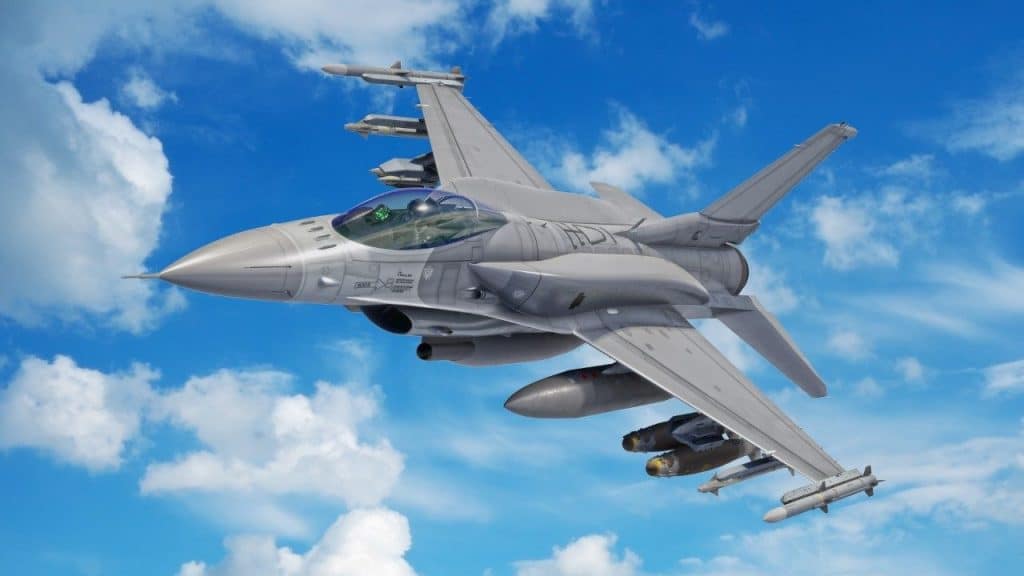Another soap opera on the combat aircraft market is coming to an end. On Friday, November 4, the Bulgarian National Assembly voted to purchase the second batch of eight Fighting Falcons in the newest Block 70 variant. The deal will be worth around $ 1.3 billion. 162 deputies out of 240 voted for.
Parliament approved the purchase of the first eight machines for $ 1.25 billion in July 2019. Woennowyzduszni sili will receive the first of these fighters in the years 2025–2027. The purchase of the second eight was necessary to fully equip one squadron and finally retire Soviet-made machines.
In recent years, we have repeatedly described the problems surrounding the Bulgarian purchase, which – still at the stage of the top eight – aroused such controversy that it even got a presidential veto. The second eight was practically a formality against this background – it was only necessary to decide whether to buy, but what to buy. Acquiring a different type of combat aircraft would be absurd from a financial and logistical perspective.
The defense ministry in the government of technical prime minister Gyłyb Donewa had already approved the purchase project, but the approval of the parliament was still needed, and this could only come after the elections scheduled for October 2. The most seats – 67 out of 240 – were won by the GERB-SDS coalition by Boyka Borisov, who was prime minister in autumn 2017, when a decision was made to cancel the previous tender, won by Gripen (who defeated the Italian used Eurofighters Typhoony Tranche 1). As we know, the F-16 triumphed in the new procedure.
The first Bulgarian F-16 pilot, Captain Alexander Velinov, completed his training in April this year.
(Maj. Angela Walz)
The US Department of Defense Agency for Security Cooperation (DSCA) announced approval to sell eight more Vipers (four single-seater and four two-seater) in April this year. It was a response to a request made by the Bulgarian Ministry of Defense in August 2021.
– Acquiring new aircraft is extremely important for the Bulgarian air force – said the Defense Minister in the Donev government, Dimityr Stojanov (by the way, the former chief of staff of the air force). – We have old Soviet machines that we cannot maintain due to the problems that occurred when the war in Ukraine broke out.
When the Bulgarian parliament approved the purchase of the first eight F-16s, voices rose that $ 1.25 billion was too high a price, especially as guided bombs were missing from the weapons package ordered, and only twenty-four Mk 82 bombs were reduced. from sixteen pilots to twelve, and for mechanics – from seventy-five to sixty-five.
The request for the second batch of the F-16 corrects these shortcomings somewhat. The list of components provided by the DSCA included the KMU-556 and KMU-572 control units for JDAM bomb assembly, as well as the MXU-650 flight path correction control surface kits and the MAU-210 Paveway bomb guidance computer kits. But the list is only a list, we will yet see if Bulgaria actually invests in guided bombs.

Bulgarian MiG-29UB.
(US Air Force / Airman 1st Class Brooke Moeder)
It is not yet known what the protection of Bulgarian airspace will look like during the transition period. The MiG-i-29 currently used in the Bulgarian aviation should be withdrawn from service in December next year. They will survive the next twelve months thanks to the help of Poland, which will provide the Bulgarians with two engines from its own stocks; six more are likely to be renovated in Poland.
And what next? It is not known. At first glance, the logistically simplest option would be to extend the Fulcrum service for three years, but it is not known if this is feasible in practice. Sofia is also interested in leasing Western fighter jets; it is known that France and Sweden have already replied to the RFP. At the moment, it also seems likely that – as in the case of Slovakia – assistance will be provided by NATO allies who will rotate air contingents to Bulgaria.
See also: Drones, HIMARS, submarines and (almost) cruisers. Record budgets in Asia
Lockheed Martin

